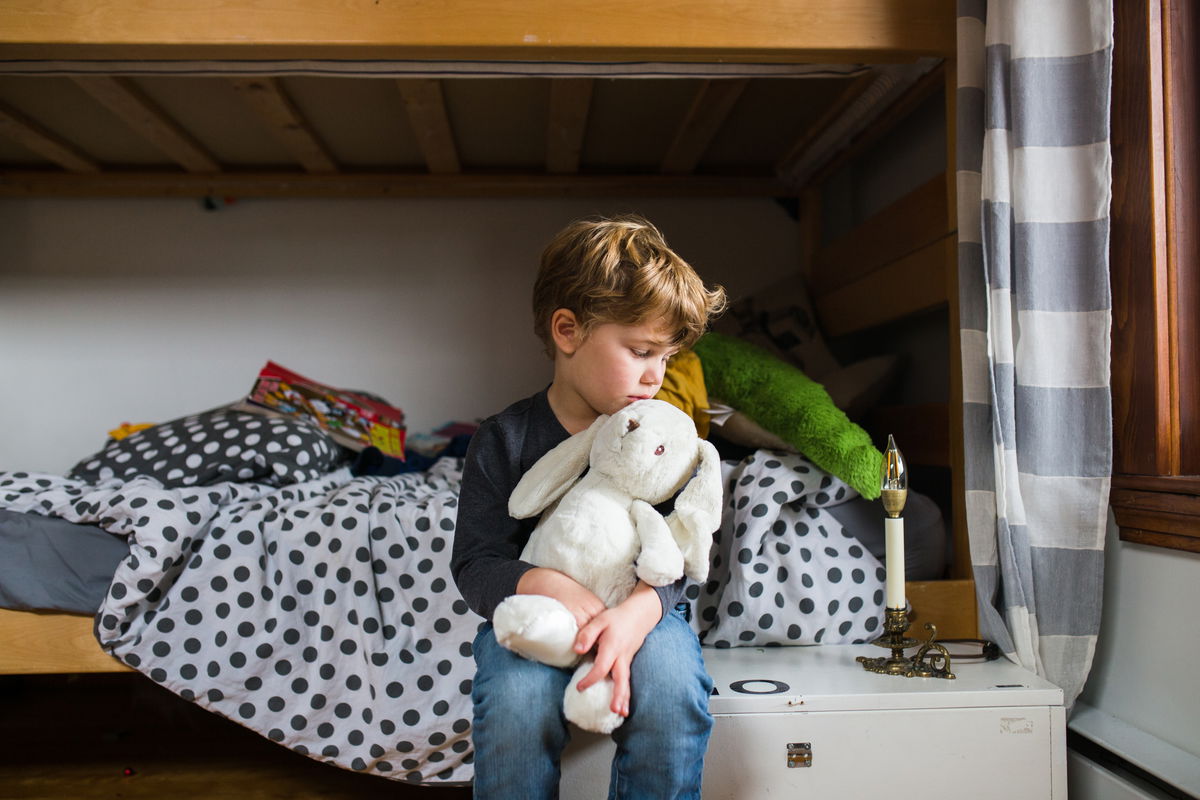Highlights
During the first year of both our children’s lives, my husband attended every visit to the pediatrician with us. I remember one nurse expressing surprise when he’d frequently show up late to an appointment after rushing across town from work to get there. “Well, it’s great to have dad here, too!” she said. Now that our kids are getting older, he continues to attend as many of their medical appointments as possible, especially when the visits involve getting shots (often to help me hold the kids down).
My husband’s participation in this area was not something we ever really discussed, other than me saying, “The baby has a well-check tomorrow,” and him responding, “What time? I’ll try to be there.” From the minute our children were born, I guess I expected him to join me in these efforts as part of a parenting team, along with changing more than his share of diapers, and getting up with me to feed them in the wee hours of the night.
But what I noticed at these doctor visits is that while most medical professionals acknowledged my husband’s presence, they mainly directed their questions and comments about our children to me. On the rare occasion they did include him in the conversation, they would talk about ways for dad to “encourage mom,” or “help out” with the kids, as though he was just an extra hand. It frustrated me that we rarely, if ever, received information about the critical role that fathers play in advancing child wellbeing.
How refreshing, then, to see the American Academy of Pediatrics (AAP) release a new clinical report this month that not only recognizes the unique contributions of fathers to healthy child development, but also encourages pediatricians to make an extra effort to support and involve dads more. It is the first clinical report on fathers the AAP has released in over a decade, and it includes an extensive review of the emerging research on fatherhood.
The AAP defines fathers broadly in the report to include biological fathers, foster dads, stepfathers, and grandfathers who are the “most involved in caregiving and committed to the well-being of the child,” regardless of “living situation, marital status or biological relation.” It also notes that fathers today “represent 3.4 percent of all stay-at-home parents, and 32 percent of these men are married to women working full-time.” These dads “care for more than 200,000 children full-time and almost 2 million preschoolers part-time.”
While stay-at-home dads are obviously more likely to visit the pediatrician’s office with their kids, the report is aimed at encouraging more child care involvement from all types of fathers—especially those who don’t live with their kids and face a myriad of barriers to being involved in their lives. Importantly, the AAP gives a brief nod to the well-established link between marriage and responsible fatherhood, acknowledging for example that, “Fathers’ involvement during the newborn period is strongly associated with marital status.” It goes on to explain that unmarried father involvement tends to decrease substantially following the end of a romantic relationship with a child’s mother, and “especially as [fathers] enter subsequent relationships and have children with new partners.”
The report emphasizes that fathers’ roles are changing, “far beyond that of stereotypic disciplinarian, breadwinner, and masculine role model to that of care provider, companion, teacher, role model for parenting, and supportive spouse,” adding that, “The unique and complementary role of fathers is beginning to be understood.” This uniqueness of fathers is the big takeaway from the AAP report, which repeatedly highlights the myriad of ways fathers benefit their children that mothers generally do not.
Take, for example, a father’s unique style of play, which begins when a child is still a baby. The report notes that “the father is more likely to be the infant’s play partner than the mother, and father’s play tends to be more stimulating, vigorous, and arousing for the infant.” Father-play is also important during early childhood. According to the AAP, “roughhouse play” between dads and their preschoolers “predicted decreased externalizing and internalizing behavior problems and enhanced social competence.”
Dads also engage in a unique communication style with their kids. As the report explains, while mothers tend to communicate at the child’s level, fathers generally use bigger words when they speak to their children. Both forms of communication are valuable for kids, but the report cites research that found “at 3 years of age, father-child communication was a significant and unique predictor of advanced language development in the child but mother-child communication was not.”
As we know, fathers also play a critical role during the adolescent years for both girls and boys. The report cites the vast body of research that shows father-presence can reduce anti-social behaviors in boys, and is linked to a decrease in early puberty, depression, early sexual activity, and teen pregnancy in girls.
"Fathers do not parent like mothers, nor are they a replacement for mothers when they are not at home; they provide a unique, dynamic, and important contribution to their families and children.”
Despite the growing body of research on the importance of fathers to healthy child development, the AAP points out that “[t]he field of pediatrics remains slow to incorporate these findings into practice and into the conceptualization of family-centered care.” For example, “pediatricians still see a majority of mothers at clinical encounters and therefore may not have changed their practices to be family-friendly in terms of available hours, comfort in interacting with men, and addressing fathers’ unique concerns regarding their children.”
To help facilitate better support for father involvement, the report includes 14 recommendations for pediatricians, including that they: make an effort to welcome fathers to appointments and speak directly to them; stress the value of a father’s unique style of play and communication with children; and “encourage fathers to assume some roles early on in the care of the child,” and “encourage mothers to let the father be involved and learn from his own mistakes.”
Ultimately, the AAP report concludes: “The message is clear: fathers do not parent like mothers, nor are they a replacement for mothers when they are not at home; they provide a unique, dynamic, and important contribution to their families and children.”
This long overdue message on the irreplaceable role of fathers is not only vital for child healthcare providers to understand and communicate, but also for parents, teachers, and policymakers who want to promote child wellbeing for every family. As the AAP report demonstrates through the large and growing body of research on fatherhood, dads matter as much as moms to children’s health, and they matter in unique ways. Hopefully, more pediatricians will work harder to educate both parents about this truth and to encourage and facilitate father involvement during every stage of child development.












